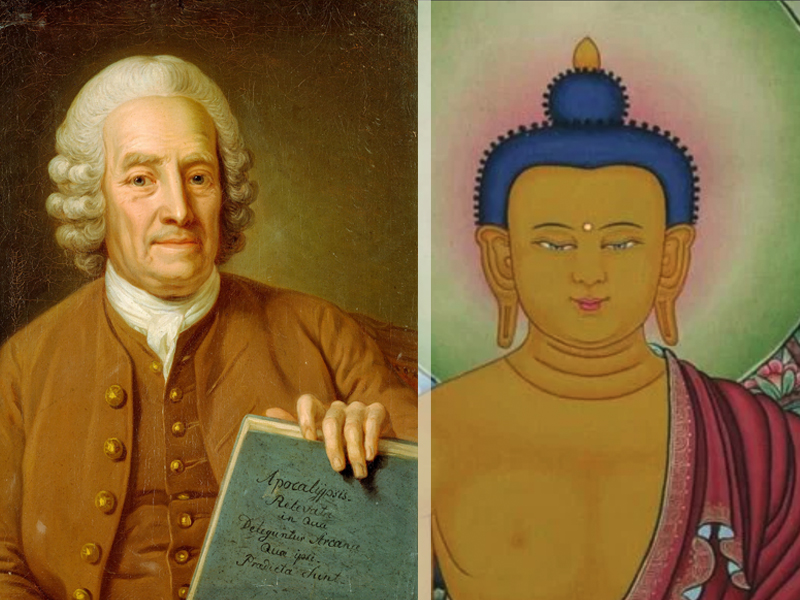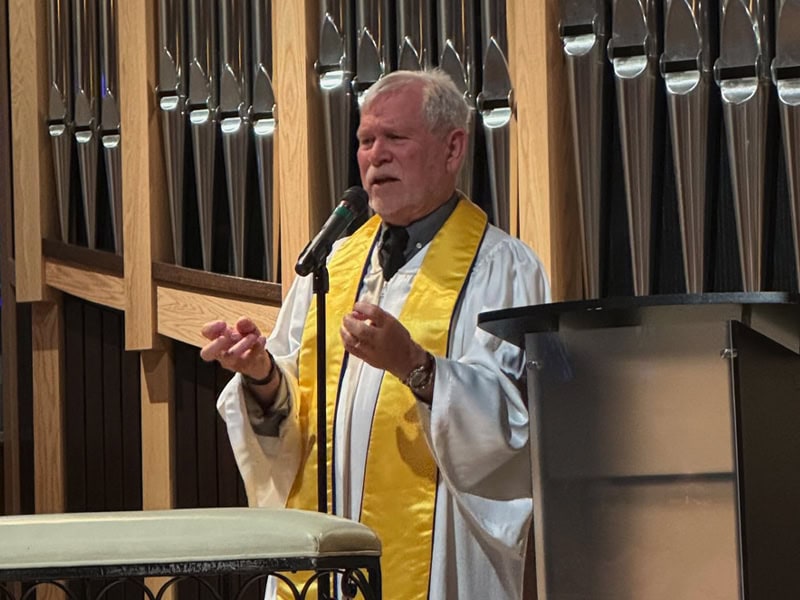By Lorraine Kardash

The following is a brief comparison between my understanding of Tibetan Buddhism and my understanding of the writings of Emanuel Swedenborg. It seems to me that in both the writings of Swedenborg and the teachings of Buddhism what are foremost is Love and Wisdom. We read in Swedenborg that,
All the things in the created universe are recipients of God-Man’s Divine Love and Divine Wisdom… every created thing is in its own nature fit to be a recipient of God—not by being a continuation but by being in contact… everything is an analogue, and by being united is a virtual mirror image of God” (Divine Love and Wisdom §56).
The image of God means His Divine Wisdom and the likeness of God means Divine Love. For wisdom is simply the image of love—love actually presents itself to be seen and recognized in wisdom. And since it is there seen and recognized, wisdom is its own image. Love, further, is the reality of life, and wisdom is the presence of life from love (Divine Love and Wisdom §358).
The recipient vessel and dwelling of love is called intention: the recipient vessel and dwelling of wisdom is called discernment (Divine Love and Wisdom §360).
Love and wisdom and therefore intention and discernment, make up a person’s very life (Divine Love and Wisdom §363).
Love without discernment is blind, affection without thinking is as though it were in deep darkness. Discernment is actually the light which enables love to see (Divine Love and Wisdom §406).
We read in Genesis 1:26 that humanity was created in the image of God according to His likeness.
A Buddhist saying is that compassion without wisdom is blind. Wisdom without compassion is cold. Buddhism teaches that the ultimate goal of life is to be useful for other living beings. Even if one becomes useful for only one sentient being, the purpose of living is fulfilled. The wish to achieve enlightenment for the sake of helping others is called Bodhichitta. Bodhisattvas are those who take a vow to remain in samsara (the six realms, which include the hell and human realms), even though enlightened, until all beings are freed.
Swedenborg says that the true purpose of creation is the realization of uses for each of the universe’s manifold forms and concludes that uses progressively turn into the forms of creation.
All defects and sufferings, according to Buddha, are the faults of only one thing—the self-cherishing conception.
A poem by Shantideva, an eighth-century Buddhist monk, reads,
Whatever joy there is in the world
All comes from desiring others to be happy.
And whatever suffering there is in this world
All comes from desiring myself to be happy.
But what need is there to say more?
The childish work for their own benefit
The Buddhas work for the benefit of others.
Just look at the difference between them.
Swedenborg wrote that, “Love is not loving self but loving others and being united to others through love… Love consists of having what belongs to oneself belong to someone else; feeling another person’s joy as joy in oneself—that is loving. But feeling one’s own joy in someone else is not loving. This latter is loving oneself; the former is loving the neighbor. These two kinds of love are exact opposites” (Divine Love and Wisdom §47).
The major theme of the writings in Divine Providence is that the purpose of the universe is to establish a heaven from human beings. Both Swedenborg and Buddhism delineate a path to become free of the sufferings of the lower realms and to achieve a union with Love and Wisdom.
Swedenborg explains that we are influenced by good and evil spirits and are constantly choosing to strengthen one side or the other. If we continually choose that which is full of ego and selfish love, the warmth of love grows colder. We can still have wisdom, but it is not real, and we are blinded by the light of self-love which we take for real light.
The path Buddha taught is called the Noble Eightfold Path to follow—right view/understanding, right intention, right speech, right action, right livelihood, right effort, right mindfulness, right concentration. The six perfections of wisdom are taught as being: generosity, patience, morality, joyous effort, and concentration/meditation.
I find that both modalities talk about realms and levels. In Buddhism there are three realms (the six realms of samsara, exist within these other three realms.) These three are The Desire Realm, The Form Realm, and The Formless Realm. We are born in a specific realm each lifetime according to Buddha’s teachings. And the realm means the body and mind we’re born with. Let’s say you’re born in The Desire Realm as a human. If you practice methods of meditation and your mind goes to a higher consciousness, your body still remains in the human (desire) realm. So, when you’re in that state of deep absorption, when you come out of it, then you are back in your human consciousness. Your body still remains a human body even though you’ve actualized those states of absorption, and it is not that when you enter the formless realms that your body disappears: it’s still there.
In Divine Love and Wisdom §345, Swedenborg wrote,
The spiritual flows down from its sun all the way to the lowest aspects of nature and does so through three levels. These levels are called the celestial, the spiritual, and the natural. These levels are within people from creation and therefore birth. They are opened as the life admits. If the celestial level is opened, which is the highest and most inward, the person becomes celestial. If the spiritual level is opened, the person becomes spiritual. If only the natural level is opened, which is the lowest and most outward, the person becomes natural. If people become only natural, they love only physical and worldly things. To the extent that they love these, they do not love celestial and spiritual things and do not focus on God.
Swedenborg teaches that God is the creator existing in everything but not separate from itself. Therefore, God does not pour into a person, but the very life is God and exists in all things. We have no life of our own apart from this. I am going to venture a guess that the Buddhist teaching on emptiness relates to this.
Buddhism does not talk about a supreme being but about “beginningless, endless mind,” Buddha mind, and the importance of realizing that we are not selves apart from this.
There are also parallels concerning death. Both emphasize the importance of one’s last thought (Heaven and Hell §449.3), and that one’s karma, in Buddhism or proprium in Swedenborgianism, survives death. For both, there is a self-judgment in which the true nature of one’s ruling affections become revealed to oneself. In the Buddhist system it happens in the bardo (the period between death and the next life), and then a person is on to another life or realm, and in Swedenborg this is sorted out in the spirit realm before the being then chooses heaven or hell.
In Swedenborg’s intermediate world of spirits, the outward elements must be changed until they conform with the inward. At this point one’s inward can no longer be reformed. This is actually the same for Buddhists, except that there is the possibility of enlightenment in the bardos if the person recognizes the clear light as their own being.
Both are very descriptive as to the hell realm. In Swedenborgianism, the understanding is that one has a one life preparation for heaven or hell. In Buddhism, while it is not probable that a being gets out of hell, escape is always possible no matter where you are if you realize the sunyata (emptiness) of your own mind. Then there is the reparation and progress that can hopefully be achieved in successive lives.
If I were to pick the most obvious difference in the two spiritual paths it would be the enormous wealth of spiritual practices in Buddhism which incorporate centuries of Hindu and Shamanic practice with the distinctive teaching of the mahayana tradition, and the overwhelmingly intellectual bent of Swedenborgianism. Though for Swedenborgians, the practice occurs by simply using our own minds and hearts in daily life, with intention and discernment: an ongoing, unending devotion.
Read the full issue of the April 2023 Messenger

Meet Lorraine Kardash
Pastor Lorraine Kardash was ordained as an interfaith minister by The Chaplaincy Institute of Maine in 2006 and consecrated as a Licensed Pastor in 2019 by The Swedenborgian Church of North America. She is currently the Pastor of the Portland New Church in Portland, Maine.



